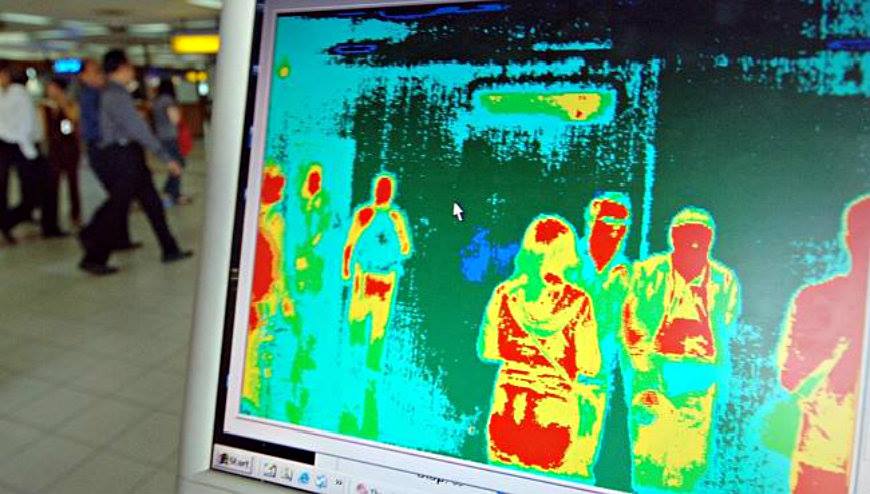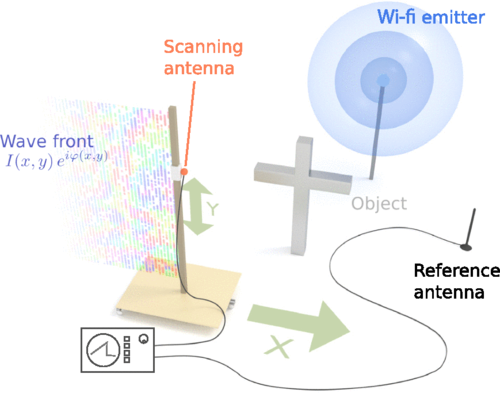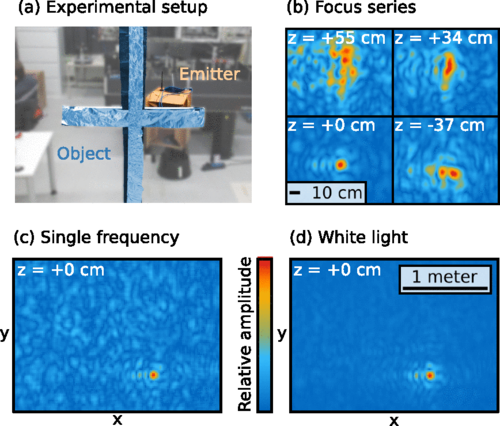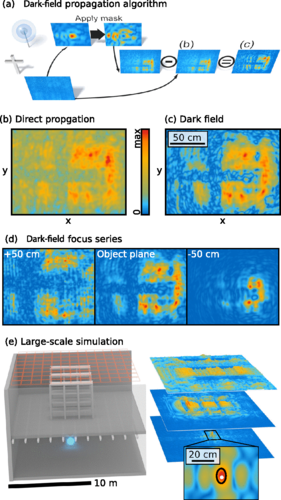
The research, which was published by Physical Review Letters, shows that wireless data transmission systems including WiFi or Bluetooth emit electromagnetic waves with a precisely known amplitude and phase which can be used to map objects in their surroundings.
Microsoft gives a peak at its augmented reality glasses
“Propagating in space, this radiation forms a hologram — a two-dimensional wave front encoding a three-dimensional view of all objects traversed by the light beam. Three-dimensional views of objects and emitters are made by feeding the resulting data into digital reconstruction algorithms,” Philip Holls and Friedemann Reinhard noted in their report.
 PHOTO: Philip Holls and Friedemann Reinhard/Physical Review Letters
PHOTO: Philip Holls and Friedemann Reinhard/Physical Review LettersThe two scientist went on to test their ground breaking technology in an experimental environment. Stray radiation from a commercial router was employed to image metre-sized objects by digital holography. The researchers then record a hologram of WiFi radiation by using a synthetic aperture approach.
The scientist then employ digital implementation of dark-field propagation to suppress multipath reflection, which significantly enhances the quality of the resulting images.
 PHOTO: Philip Holls and Friedemann Reinhard/Physical Review Letters
PHOTO: Philip Holls and Friedemann Reinhard/Physical Review Letters"It can basically scan a room with someone's WiFi transmission," said Holl, a 23-year-old undergraduate physics student at the Technical University of Munich. He initially built the device as part of his bachelor thesis with the help of his academic supervisor, Friedemann Reinhard.
The new age: Holographic impressions that leave a mark on minds
"If there's a cup of coffee on a table, you may see something is there, but you couldn't see the shape," said Holl. "But you could make out the shape of a person, or a dog on a couch. Really any object that's more than four centimetres in size."
 PHOTO: Philip Holls and Friedemann Reinhard/Physical Review Letters
PHOTO: Philip Holls and Friedemann Reinhard/Physical Review LettersThe technology, which is at its early stages, has application in a wide range of areas. Adding an array of reference antennas, said Holl, inside a truck, might help rescue workers detect people in rubble left by an earthquake or spy agencies see whether anyone is home.
"You could probably use a drone to map out the inside of an entire building in 20 to 30 seconds," he said.
This article originally appeared on Business Insider.

1732184775-0/BeFunky-collage-(80)1732184775-0-165x106.webp)

1731933289-0/BeFunky-collage-(68)1731933289-0-165x106.webp)

1732085354-0/insta-(1)1732085354-0-270x192.webp)











COMMENTS (4)
Comments are moderated and generally will be posted if they are on-topic and not abusive.
For more information, please see our Comments FAQ